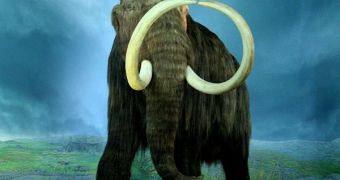In a premiere report, scientists at Penn State University (PSU), in the United States, announced that they were successful in deciphering the full genome sequence of a woolly mammoth, which was buried in the permafrost some 20,000 years ago. The experts used DNA samples harvested from strands of hair, as they are more accurate than those sampled from bones, where environmental factors and microorganisms, such as bacteria and fungi, can affect the outcome of the tests.
In addition to the old fossil, the team also used the preserved mummy of a 65,000 year-old mammoth, which was found in Siberian soil. They were able to identify some 4 billion DNA bases, out of which roughly 3.3 billion belong to the animal itself. In fact, the researchers, led by PSU professor of biology, computer science and engineering, Webb Miller, and Stephan C. Schuster, a PSU professor of biochemistry and molecular biology, have no way of knowing exactly how many of the bases belong to the woolly mammoth.
In order to figure this out, they have to first wait for other science teams worldwide to complete the genome sequencing of the African elephant's DNA strands, as the elephant is the closest living relative to the mammoth. "Only after the genome of the African elephant has been completed will we be able to make a final assessment about how much of the full woolly-mammoth genome we have sequenced," argued Miller.
He went on to say that "Our data suggest that mammoths and modern-day elephants separated around six-million years ago, about the same time that humans and chimpanzees separated." Schuster added that "However, unlike humans and chimpanzees, which relatively rapidly evolved into two distinct species, mammoths and elephants evolved at a more gradual pace."
The inexpensive and short-term research employed next-generation DNA-sequencing techniques. Apart from finding out how the woolly mammoth was constructed, the team is also attempting to learn exactly how these large beasts adapted to the extremely cold environments around the North Pole. This could give them new ideas about how to deal with the situation of other animals facing extinction, such as the Tasmanian devil.

 14 DAY TRIAL //
14 DAY TRIAL //